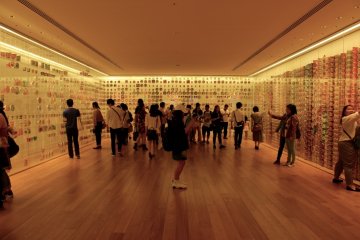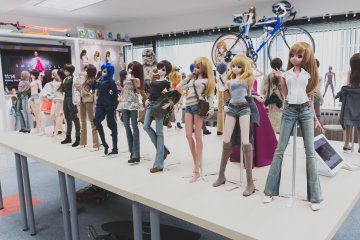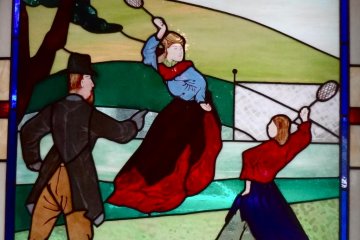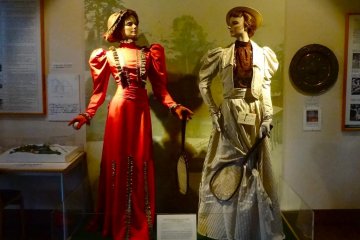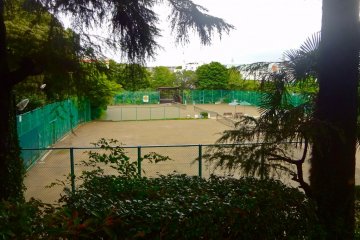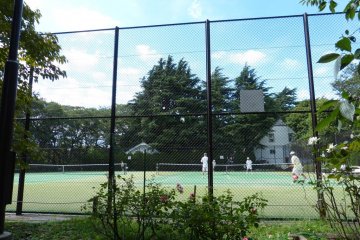A man accompanied by two girls arrived at Yokohama Port in 1869, just one year before Yamate Koen Park was built. He also brought a fantastic Australian horse with him. His name was John Henry Brook; his daughters were Gertie and Mabel. The two young ladies were soon being talked about everywhere in the settlement, because in those days, such young women were quite rare in the newly opened port city. Gertie, in particular, was outstanding. She was a skillful rider, and had a very beautiful smile. Almost all the men in the Yokohama settlement had a crush on her. Gertie was again the talk of the town when she appeared at her first dance party in a pink, satin dress.
Gertie’s father Brook started to work as editor of the Japan Herald (a settlement paper), and eventually became the owner of the paper. In 1879, Brook imported seeds of a Himalayan cedar from India and sowed them all around the Yamate district.
Himalayan cedars in Yamate Koen Park
The same year that Brook planted the seeds in Yamate, former U.S. President, Ulysses S. Grant visited Japan on a world tour. When he arrived at Yokohama Port in July, he was invited to a dinner at the settlement in Yokohama. After Yokohama, he moved on to Tokyo where he had an audience with the Meiji Emperor in Hama-rikyu, and where he planted a Himalayan cedar at Shiba Zojo-ji Temple. On August 1st, an American couple living in Yokohama invited him to another welcome party. The party was held at Yamate Koen Park. Do you think he might have helped by planting seeds at the park? Anyway, it’s interesting that Brook and Grant both planted Himalayan cedars the same year. When you visit the park (and indeed the entire Yamate area) you will see these big Himalayan cedars growing gracefully here.
Yamate Museum of Tennis
There is a small museum inside the park. The items exhibited are related to the history of tennis in Japan. Soon after the first lawn tennis match was played in the U.K. in 1875, tennis quickly became popular worldwide; British residents in Yokohama started to play it in 1876, here in this park. The costumes, rackets and balls were quite different from the ones we use nowadays. I wonder how they managed to play tennis in such dressy clothes—in the museum, we can see two female mannequins wearing long skirts and holding small rackets. It must have been enjoyable to see such gorgeously dressed players on the court!
Women’s tennis
The Japan Weekly Mail (an English weekly newspaper in the settlement) published an interesting story about ladies’ lawn tennis. This is an excerpt from the article on June 17 1876.
“So far as the pleasure of the spectators is concerned, the presence of ladies in the game is incontestably a great and unalloyed gain. The action demanded of the player is far from ungraceful…and when – as is sometimes the case – an indestructible charm of manner pervades every motion of a fair player, her very failures are apt to produce a sense of pleasure, which the most skillful successes of our own sex are unable to command.”
The gentleman who finally won the heart of the beautiful Gertie was W. H. Smith (who helped to build the Yamate Koen Park). Did they play tennis together sometimes? I enjoyed walking around and thinking about that while I was visiting this very historical park on the Bluff.
*An index of this entire Foreign Footsteps in Japan series can be seen here.




